The ASUS ZenFone 2 Review
by Brandon Chester on May 26, 2015 8:00 AM ESTASUS ZenUI
Despite Google's continued improvements to the design and aesthetics of Android with each major version, manufacturers still find it necessary to make their own modifications to the interface as well as the standard suite of applications that the user will expect to have on the device. Some vendors, such as Motorola, are content to leave most of the Android interface intact, and only bundle a few of their own applications. Others like HTC and Samsung do a fairly comprehensive redesign of Android, including all of the system applications and elements of the interface.
ASUS tends to fall in the latter camp, with ZenUI being similar to Touchwiz and Sense in how it provides its own suite of applications, its own launcher, and its own design for areas like the notification drawer and the settings application. While some users are immediately put off by phones that don't run "stock" Google Android, the modifications that a manufacturer makes to the system are not necessarily negative.
The first thing I noticed after getting through the setup menu is the weather widget and the app shortcuts on the lock screen. I think having the weather available at a glance is a nice addition to the stock Android lock screen. The app shortcuts aren't implemented quite as well. When you touch them, the screen goes dark except for a bright area that you can drag around with your finger. You're just supposed to drag in any direction, which isn't made clear by the over complicated darkness and lighting effects that ASUS has thrown on. Google's lock screen definitely does a better job with the visual cues for activating the app shortcuts.
Once you unlock the phone, you're greeted with the launcher. There's nothing very special about the launcher itself, but ASUS offers a large number of options for customization which you can access by swiping up or long pressing on any of the launcher pages. I actually found that the defaults set by ASUS were to my liking for the most part, but I'm sure that many users will appreciate the ability to select different themes and customize certain aspects of their current theme like the animations and the application icons.
I think the design changes that ASUS has made to the OS can actually look pretty good. I like the changes they've made to the clock in the notification drawer, and having the brightness slider usable without swiping a second time to access the quick toggles is very useful. They've also added the ability to put application shortcuts and to customize the quick toggle menu. I've left it in its default state just so you can see what ASUS has opted to put there by default.
ASUS's design style is definitely not Material Design, but it doesn't look heavily dated or interfere with the user experience in a negative manner. Users who insist on having everything follow Google's guidelines will probably want to stick with Nexus devices, but I think most users won't be bothered by ASUS's changes. I personally think ZenUI is a much better interface than Touchwiz on the S6, although users who dislike Touchwiz may not feel like that's much of a compliment.
The big problem with the software experience on the ZenFone 2 is the obscene amount of preinstalled software. Some of it comes from ASUS, and some of it is quite frankly nothing more than shovelware. I'm thankful that ASUS has shoved the worst offending apps into a folder called Apps4U, and made them all uninstallable. Having Dr. Safety preinstalled on your phone is really like the Android equivalent of getting a Norton 360 trial on your PC.
On top of the shovelware, there's just a giant number of applications that I can't begin to explain. What is Omlet Chat, and why do I want it on my phone? Why is there a Mirror app that quite literally just turns on the front facing camera? Why is there a System Update app that just opens that section of the Settings app? Other strange decisions like the flashlight being a separate app is also annoying because it means that the standard flashlight quick toggle in the notification draw now takes you to an app.
ASUS can provide updates to all their apps via Google Play. Since that's the case, I don't know why they're stuck on the phone if you don't want them. While you can use the disable function to hide them, they still take up space on your phone. There isn't a huge impact in available storage (54GB) compared to most smartphones, but it is irritating at any rate.
In addition to the bloatware problems, I'm really beginning to get frustrated by the number of OEM applications that quite literally duplicate the functionality of the applications Google already provides. When it's a situation where the OEM applications genuinely makes improvements over Google's offerings, as in the case of camera applications and some web browsers, then I'm completely okay with it. But in many cases, such as the third party gallery apps I see on so many smartphones, the OEM app does absolutely nothing that Google's application doesn't do, and doesn't do anything better than Google's app does.
This is not an issue that is unique to ASUS, but they're guilty of it to a greater degree than some other manufacturers like Motorola. They have their own music app, their own mail app, their own photos app, their own browser, and all of them take up space that could be made available to the user.
The overall software experience on the ZenFone 2 ends up being a mixed bag. The software itself is not bad at all, but there's so many preinstalled applications from ASUS and other vendors, and almost none of them are useful. If you're one of the people who likes to root their phone you'll have a great time once you delete them from your device. If you aren't into that you'll have to settle for disabling them, which unfortunately won't free up any of the space they take.
Android Apps On An x86 Device
I've seen some concern from readers about potential issues with running applications due to the fact that the ZenFone 2 uses an Intel Atom CPU which uses the x86 instruction set rather than the ARM instruction set. It definitely seems like a reasonable concern, and so I felt it was important to address why it's not really an issue.
The important concept to understand here is the idea of an Instruction Set Architecture, or an ISA. This is different from the microarchitecture of the CPU itself. The microarchitecture is how the processor implements logic and the ISA, while the ISA itself relates to the programming of that CPU. It defines the processor's registers, native data types, and the set of opcodes or "instructions" that can be executed by the CPU. Different processors implement different instruction sets, and two processors can use the same instruction set but have completely different microarchitecture designs.
Since machine code targeting one ISA won't run on another, it would seem to make sense that Android phones that use Intel CPUs would be incompatible with Android applications. However, this is not true for the majority of Android applications which are written in Java. Java is unlike languages such as C++ which are compiled to machine code that is compatible with a given ISA. Instead, Java code is compiled to a special Java bytecode, which is then translated by a Java Virtual Machine into machine code. This is what enables the promise of "Write once, run anywhere" which is Java's main appeal.
Because the ART Runtime that Android now uses has support for ARM, MIPS, and x86, there's really no reason to be concerned about application support. Any application written in Java will be compiled to native code by ART and will work completely fine on your phone. This covers the vast majority of Android applications.
The only time an issue arises is when you start talking about applications made using the Android NDK, which are written in compiled languages like C++ and thus not easily portable. Thankfully, NDK-built applications that are not available in x86 are an increasingly rare sight these days, as the NDK has supported x86 for a number of years now. Consequently developers essentially have to choose not to support x86 at this point, as the NDK will otherwise hold your hand and encourage you to build for multiple architectures. And even then, although there's the potential for NDK applications to exist and not work on your Intel based phone (particularly old applications), Intel can still do binary translation from ARM to x86 which will allow the app to function, although it will have performance penalties.
I personally had no issues with application compatibility or performance on the ZenFone 2, and the same was true of Dell's Venue 8 7840 which I reviewed earlier this year. I can't even name any apps made using the NDK that aren't benchmarks. The only situation where there could be app problems would be extreme edge cases with very obscure apps that were programmed using the NDK for whatever reason. For the vast majority of Android applications, there's absolutely nothing that users should be worried about.


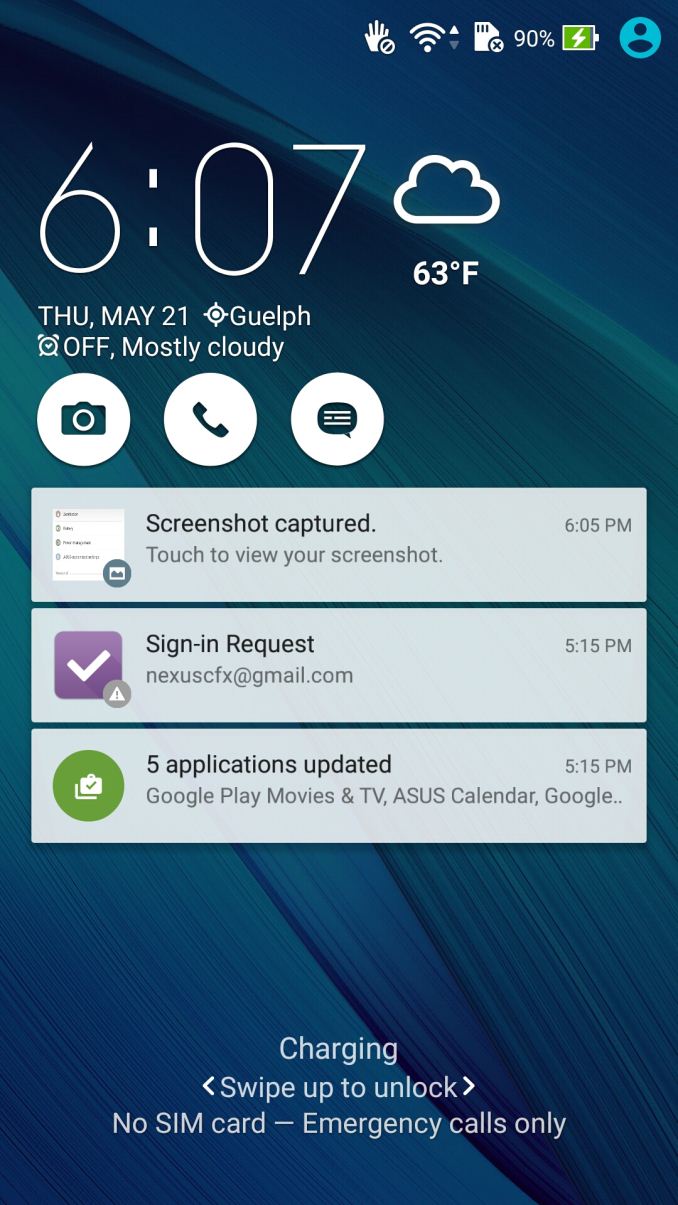
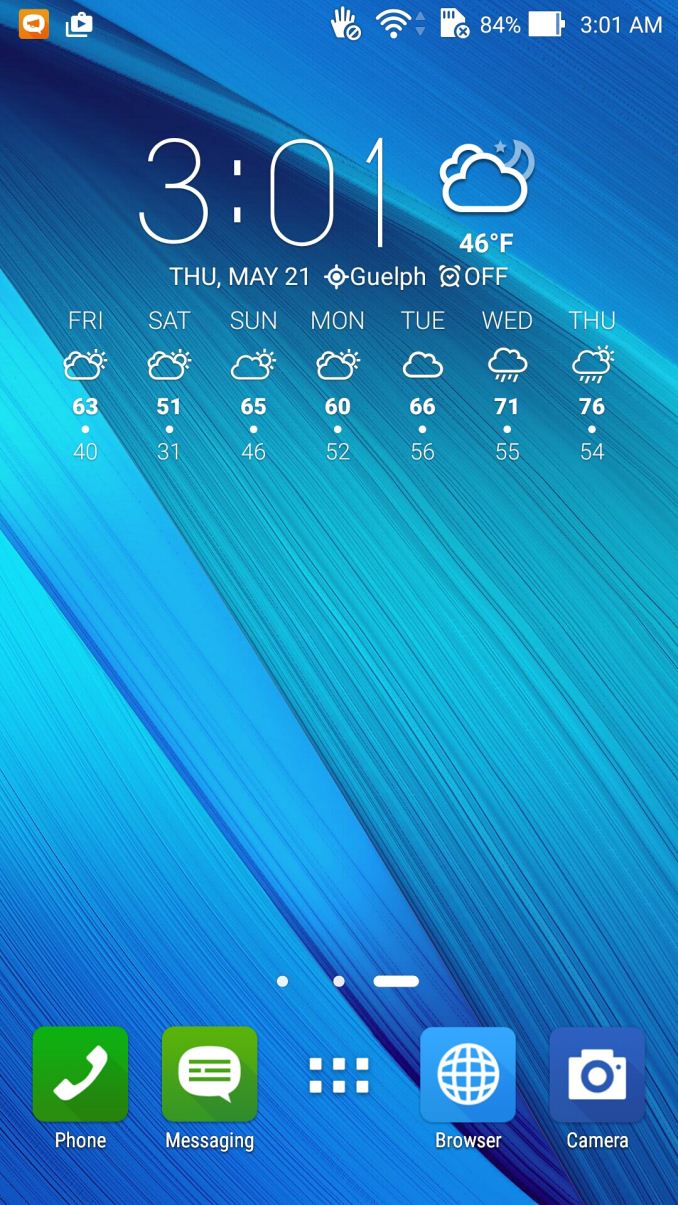
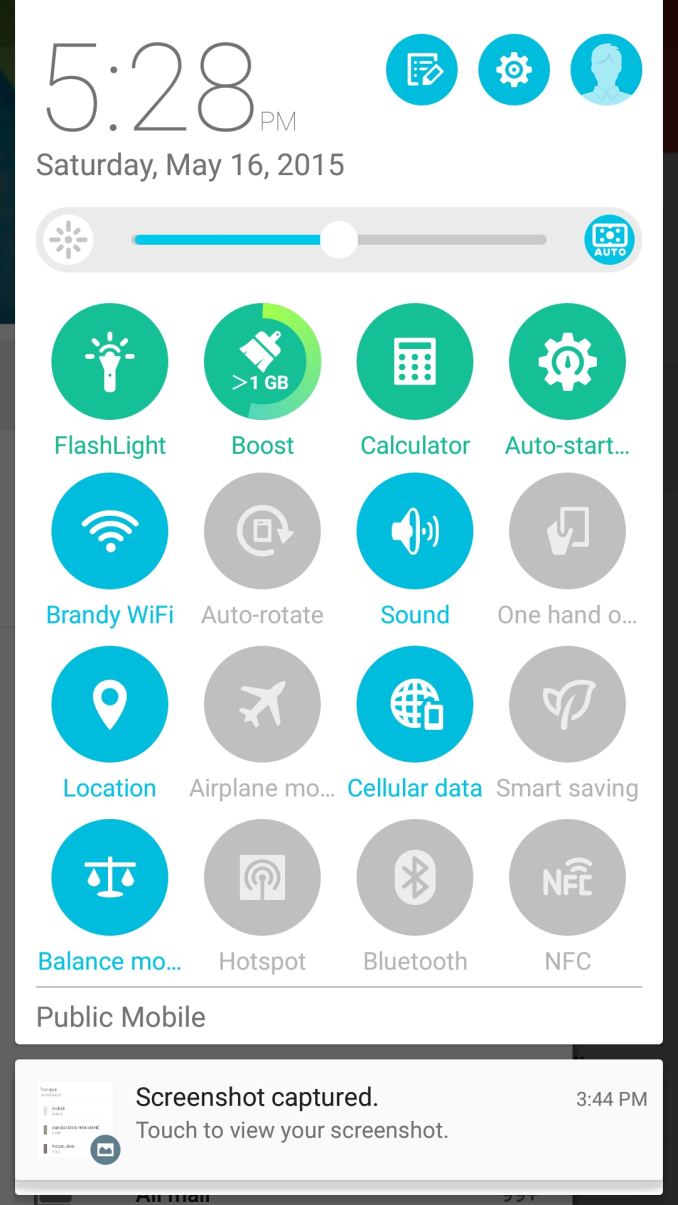
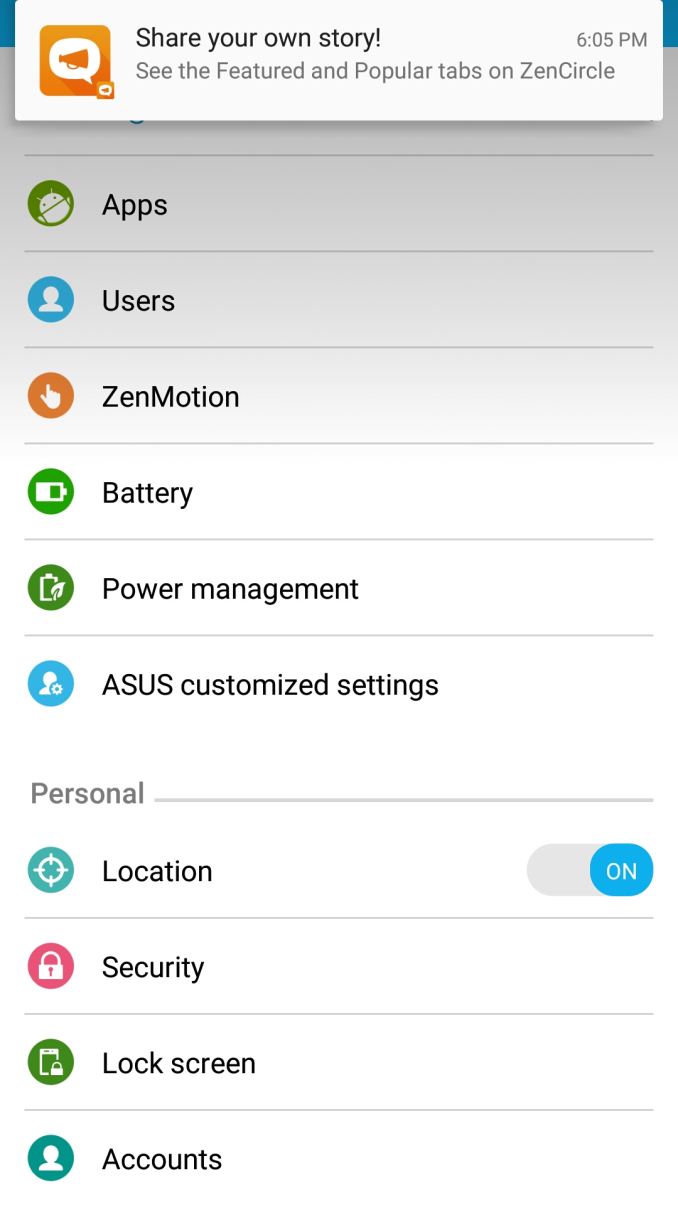
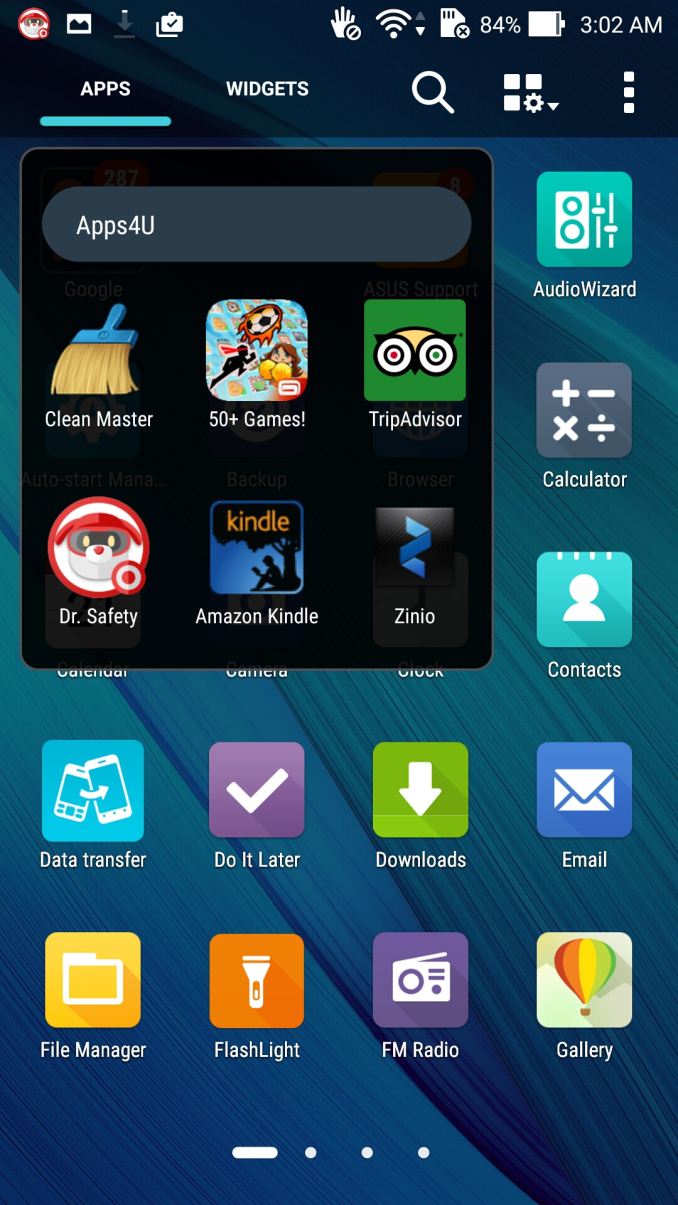
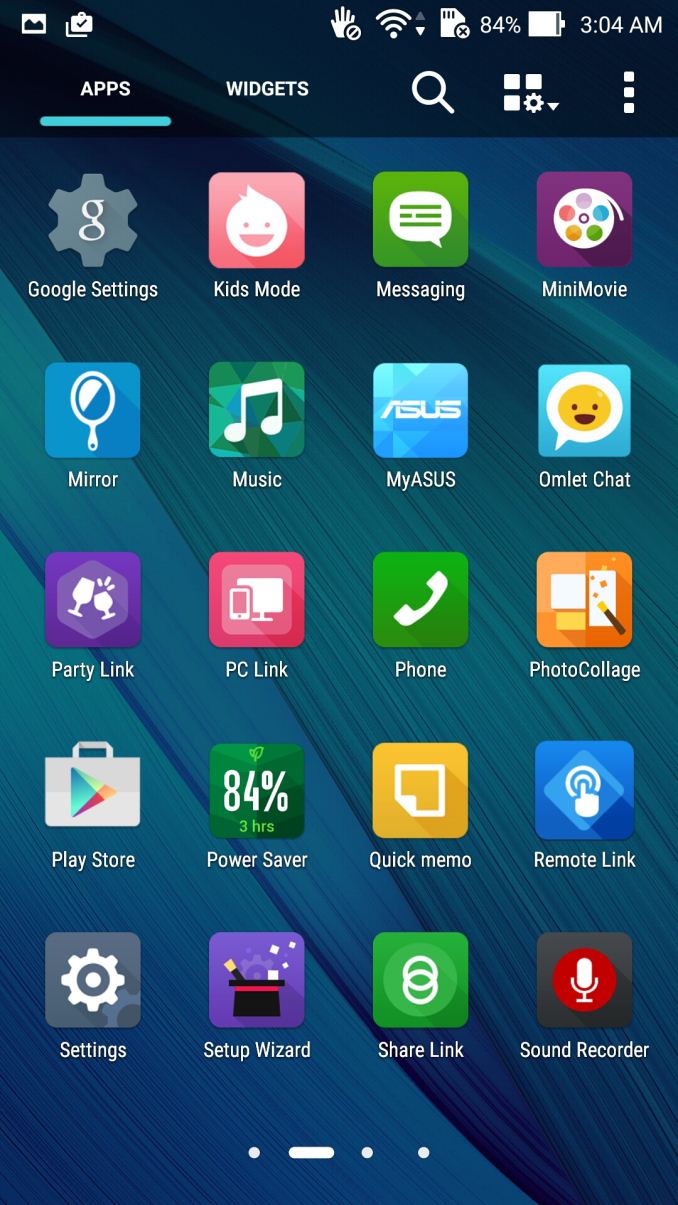

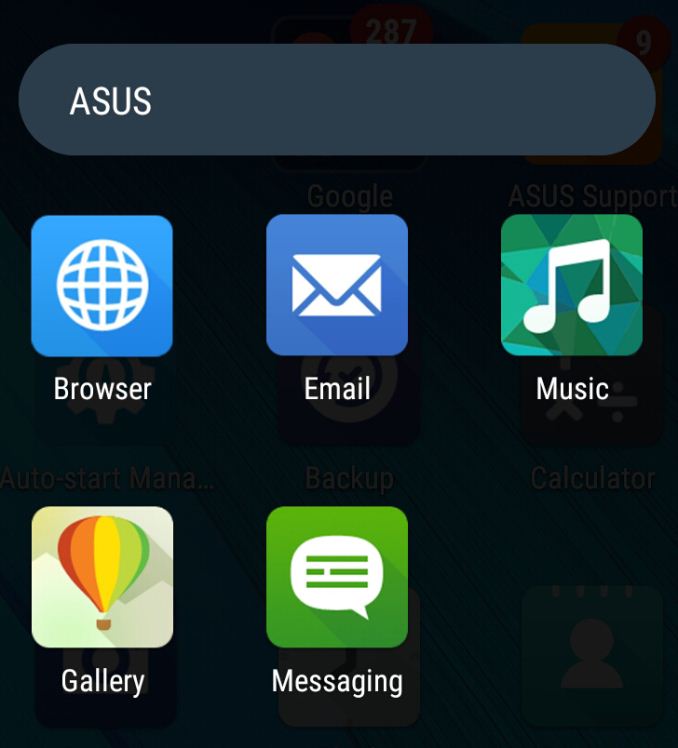
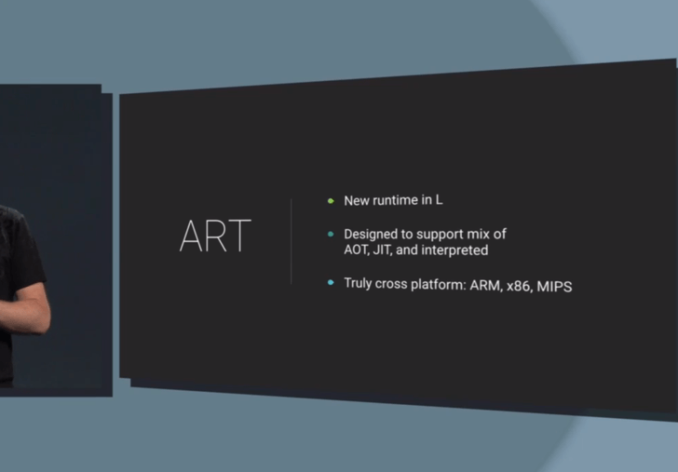








147 Comments
View All Comments
jt122333221 - Tuesday, May 26, 2015 - link
Heads up - it also supports double-tap to sleep. Unfortunately, you have to double-tap on a completely empty portion of the display (empty homescreen or in the notification bar) to get it to sleep.mkozakewich - Tuesday, May 26, 2015 - link
Put Cherry Trail in here with Window 8 (and then 10) and it would totally be what I'm looking for in a phone. I'm going to have to keep my eyes open.commenter001 - Tuesday, May 26, 2015 - link
I just bought the 4GB model. I've actually been using it more than my S6! What the review kinda skipped on was real world usage of the device. This thing doesn't skip a beat. It's amazing how many apps you re-open and they're right back where you left them (hours ago). Unlike the S6 where it seems to reload every dang time just after normal usage. The power button is not a big deal, I use the double-tap on the screen to wake it up all the time.The battery life is not that horrible, gets me through the day and I'm in poor cell area most of the time. Video and pictures, yeah, they're pretty average.
Again, I'm amazed at the lack of the usual lagginess that I've come to accept from Android. Maybe it'll creep up over time but so far this phone is on par or exceeds the S6 just in real world day-to-day stuff for me.
ketacdx - Thursday, May 28, 2015 - link
I agree man, this thing is surreal for real world usage. Battery really is pretty decent, mine is about 2% right now with 24 hrs on, 3hrs49mins of which are screen on time. Only thing I notice with mine is Android OS is using 31% of battery with CPU total at 10hrs 16 mins. I can only assume a glitch or Android issue that hopefully repairs with updates. Either way, pretty decent!! :)blzd - Thursday, May 28, 2015 - link
I'd say that's less of an accomplishment from Asus and more of a standard failing from Samsung and Touchwiz.Have you tried any other recent Android devices? Nexus devices and Motorola using stock Android have felt just as snappy and fluid for years now and it's only gotten better with Lollipop.
hans_ober - Tuesday, May 26, 2015 - link
How would this compare to the Xiaomi Mi 4i? In India, the lowest model of the Zenfone 2 is price competitive with the Xiaomi Mi 4i, which I hope AT manage to get their hands on.aryonoco - Wednesday, May 27, 2015 - link
Great article. Thanks to your work Brandon, I'm beginning to not even miss Brian any moreThis was a pleasure to read. Thank you.
lvchubby - Wednesday, May 27, 2015 - link
I'm a newcomer and respect Anandtech's true reviews instead of some others which look like marketing articles, but there's something missing about this review. I agree that the device is very value for money, but there are also quite a large number of complaints on Taiwan's user forums (in Chinese of coz) about QC and compatibility issues every time Asus launch a new phone in Taiwan. Sadly it happens repeatedly and Zenfone2 is not an exception, and still many people bought it due to it's CP value. Some of them were blaming Asus for using them as beta testers before the international launch. That's why I'm still holding up my decision.I'm not saying the Zenfone2 is not a good device, but for those who wanna buy it, I'd suggest holding up your decision for a few months till Asus hopefully solving most of the compatibility issues by software updates. Also check carefully for any faults when u receive the device.
As a side note, there are some local reviews/users saying the 3Gb RAM is not quite enough as the Zen UI eats up much RAM, and 4Gb RAM version is recommended.
chrnochime - Wednesday, May 27, 2015 - link
You mean like this thread from mobile01(yeah I read Chinese too):w w w . mobile01 . com/topicdetail.php?f=588&t=4395771
Hopefully this will force them get their shit together since they're now selling in the US...
lvchubby - Wednesday, May 27, 2015 - link
U can find similar posts even in Asus' own forum:http://w w w . asus . com/zentalk/tw/forum.php?mod=forumdisplay&fid=174
And imo it's a shame that the CEO admitted the beta tester thing...
http://w w w . mobile01 . com/topicdetail.php?f=588&t=4332578